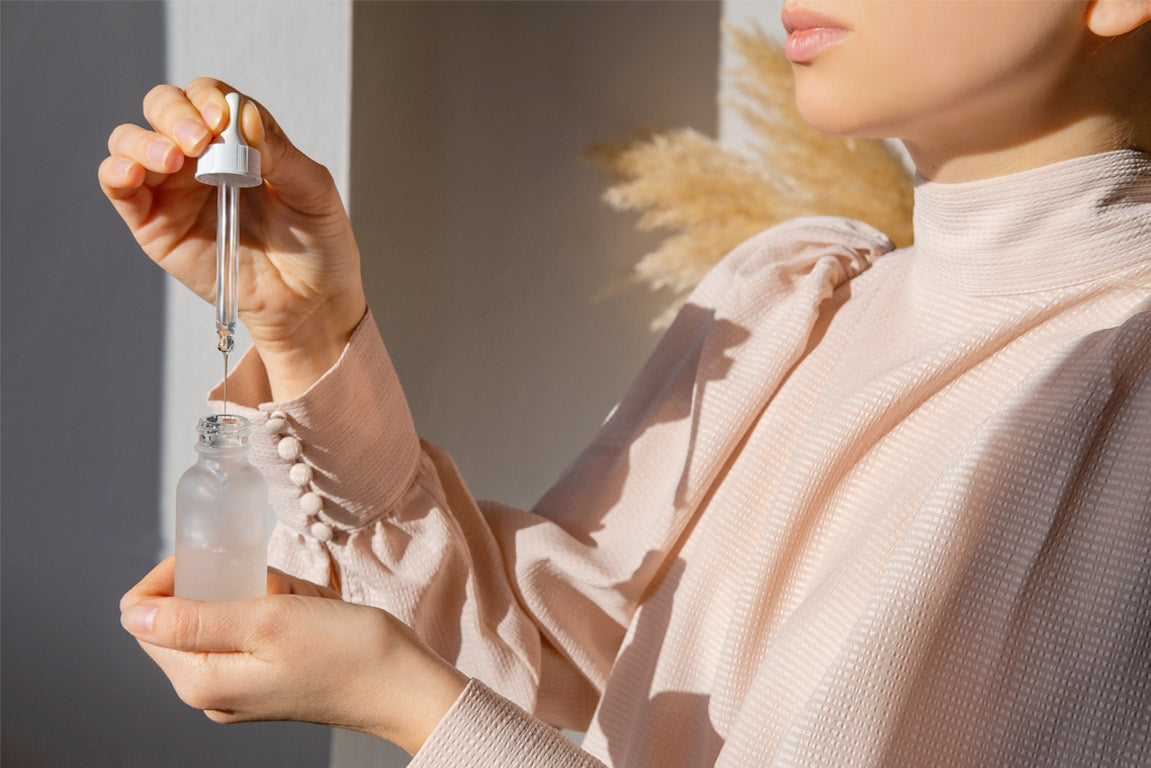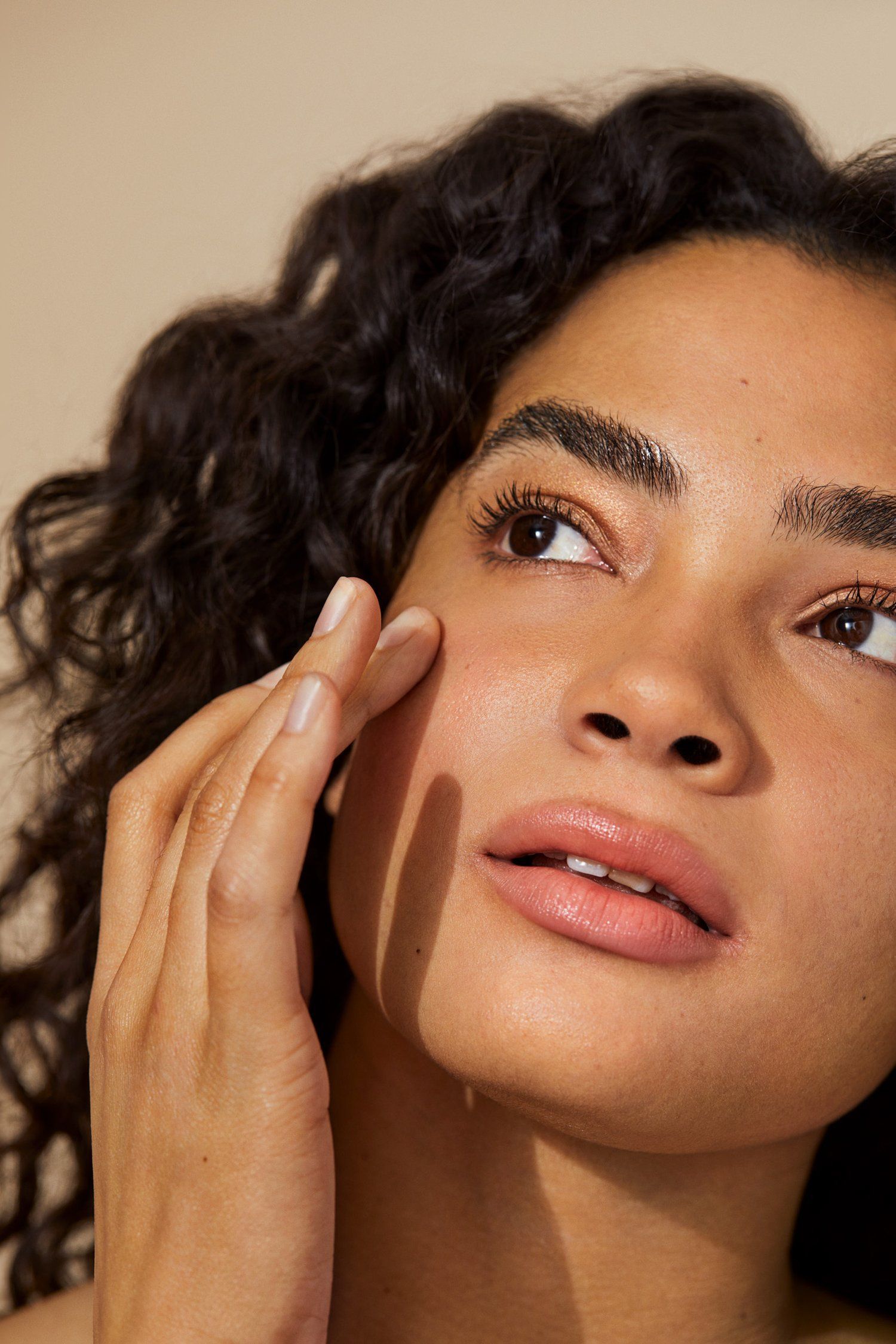Retinol is All the Rave – But is it Right for You?
Retinol is considered a holy grail skincare ingredient in many skincare regimes. Retinol is effective in treating acne, pigmentation, and signs of skin aging. Retinol is also highly powerful, with intensive properties that make some hesitant to try it. So what facts about retinol do you need to know if you’re interested in benefiting from this skincare secret weapon?
On The Skin Report podcast, Dr. Simran Sethi, an Internal Medicine doctor and Founder of RenewMD medical spas and SKIN by Dr. Sethi, explains the scientific qualities of retinol that make it an effective skincare ingredient. From its anti-aging impacts to its clinically proven skin benefits, Dr. Sethi breaks down how retinol works so listeners can make informed decisions about this ingredient. Read on to learn more about retinol, its impact on the skin, and how to safely incorporate it into a skincare routine!
How Retinol Benefits the Skin
It’s common knowledge that retinol is a powerful skincare ingredient for treating wrinkles, acne, pigmentation, and more. But what about this ingredient makes it so effective? First, let’s go over the facts.
Retinol is a derivative of Vitamin A, and there have been numerous studies on its chemical structure and properties. This clinical data shows retinol’s ability to increase cell turnover and collagen production, making it a mainstay skincare ingredient that can be applied to multiple uses.
Retinol and Skin Cell Turnover
Our skin is constantly exposed to the sun, pollution, blue light, bacteria, and other factors that can cause damage to its surface. Damage from elements such as these can lead to skin insults like fine lines, wrinkles, spots, and other blemishes.
Skin cell turnover is the process that our skin undergoes to shed older layers of skin and create new skin layers. These new undamaged skin layers are healthier, stronger, and more capable of protecting our bodies from the elements.
All skin goes through the skin cell turnover process. However, the rate at which this occurs reduces as people age. While the young have a high turnover rate, older skin experiences turnover less frequently, causing the effects of elemental exposure to remain on the skin’s surface longer.
Retinol has continually been clinically proven to accelerate skin cell turnover, making it the best method of correcting damage. By using retinol, people can enjoy skin clear and free of fine lines, wrinkles, and abnormal pigmentation!
Retinol and Collagen Production
If you thought that rapid cell turnover was retinol’s only benefit to the skin, think again. Retinol can also help with collagen production! After six months of consistent retinol usage, new collagen synthesis is observed, making the skin stronger and more resistant to wrinkles and lines.
Retinol Use Tips and Tricks
One important thing to remember when using retinol is that consistency is key. Retinol’s benefits to the skin’s collagen production and cell turnover only occur with consistent long-term use. Therefore, you should apply retinol using the suitable formulation and strength that will work for your skin! You can use the table below as a guide when choosing retinol formulations.
| STRENGTH | RETINOL % | PROS | CONS |
| Low Strength Retinol | 0.25% |
Using low-strength retinol will result in a lower likelihood of experiencing irritation for those with sensitive skin conditions. However, this will also lessen the likelihood of experiencing retinol’s beneficial results. |
Using a retinol concentration that is too weak can waste money in the long run, as it won’t deliver the same results that a stronger concentration can. |
| Medium Strength Retinol | 0.5% |
Starting conservatively with a medium-strength will allow people with all skin types and conditions to enjoy the benefits of retinol. Dermatology studies have consistently shown that using a 0.5% retinol consistently is equally effective as a 1% formulation. Therefore, if you utilize a product with 0.5% concentration, you will still get great results without the harsh side effects! |
Medium-strength retinol may not be suitable for everyone… …however, it is wise to begin with a medium-strength formulation and then adjust to a higher or lower concentration based on your skin’s needs. |
| High Strength Retinol | 1% |
A 1% formulation commonly results in faster collagen production and fine-line reduction by a few weeks compared to a 0.5% formulation. However, more potent retinol formulations commonly cause significant peeling and inflammation of the skin. Furthermore, these side effects, in most cases, only improve moderately over time. |
A high-strength retinol is more likely to cause excessive peeling. This irritation usually occurs due to using a too-strong formulation. The rate of retinol use ‘abandonment’ is generally very high, with 1% concentrations, as most people conclude that they cannot use any retinol due to the irritating effects of this strength. |
So what’s the right retinol formulation and strength for you? Many people incorrectly believe that a higher strength, like 1%, concentration will yield more results. However, the best way to see results is by using a safe strength consistently.
Using a safe retinol strength is essential, especially for skin of color, as more potent concentrations of retinol may cause skin irritation. Therefore, Dr. Sethi recommends that users take a radial approach when starting with retinol by opting for a safe medium-strength product.
To learn more about retinol use, tune into Season 1, Episode 32 of The Skin Report podcast. On this episode, Dr. Sethi explains how to apply retinol, advises listeners on the best practices for using retinol on the skin of color, and answers common questions about this powerful skincare ingredient!



